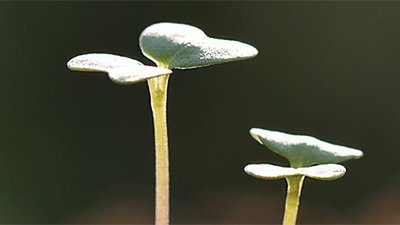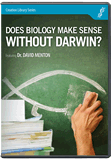Evolution of Flowers
ScienceDaily: “Insight into Evolution of First Flowers” It’s what Charles Darwin called an “abominable mystery” and what ScienceDaily says “scientists have yet to solve”: the origin of flowering plants.
Scientists from the University of Florida have been exploring the origin of the flower: that incredible, beautiful collection of organs in some plants that is used for reproduction. The university’s Andre Chanderbali, lead author on a new study about the origin of flowers, states: “There was nothing like them before and nothing like them since.” The press release adds, “The flower is one of the key innovations of evolution.”
“The flower is one of the key innovations of evolution.”
Looking at the genetic structures of two “vastly different” flowering plants, Arabidopsis thaliana, an advanced angiosperm (with four organ types in its flower), and Persea americana, a basal angiosperm (having only three organ types and considered to be from an “older lineage”), the researchers discovered that the unique parts of the Persea flowers have “significant [genetic] overlap.” To the researchers, that’s evidence that flower of Persea is “a genetic fossil.”
Evolution-believing scientists believe angiosperms developed from gymnosperms (mostly coniferous plants), with the uniqueness and complexity of the unique flower parts increasing over time. Eventually, hypothesizes Stanford University biologist Virginia Walbot, natural selection resulted in a “narrow solution in terms of four discrete organs but with fantastic diversity of organ numbers, shapes and colors that provide the defining phenotypes of each flowering plant species.”
Is this evidence for evolution? The connection between gymnosperms and angiosperms (flowering plants) is entirely an interpretation. Chanderbali vaguely states, “Although the organs are developing to ultimately become different things, from a genetic developmental perspective, they share much more than you would expect. As you go back in time, the borders fade to a blur.” This generalization does not tell us how mutations could have increased the genetic information to turn cones into the specific anatomies and functions of flowers. This is like saying that a supposedly “ancient” bird with overlapping genetic information in its different types of feathers proves that dinosaurs evolved into birds—a non sequitur. Instead, the “ancient” flower could be akin to the first created canines, from whom descended all the diversity of dogs we see today. The diversity is a result of natural selection reducing the information in individual dogs (or flowers), exactly the opposite of what organisms would need to evolve.
For more information:
Remember, if you see a news story that might merit some attention, let us know about it! (Note: if the story originates from the Associated Press, Fox News, MSNBC, the New York Times, or another major national media outlet, we will most likely have already heard about it.) And thanks to all of our readers who have submitted great news tips to us.
(Please note that links will take you directly to the source. Answers in Genesis is not responsible for content on the websites to which we refer. For more information, please see our Privacy Policy.)
Recommended Resources

Answers in Genesis is an apologetics ministry, dedicated to helping Christians defend their faith and proclaim the good news of Jesus Christ.
- Customer Service 800.778.3390
- © 2024 Answers in Genesis








